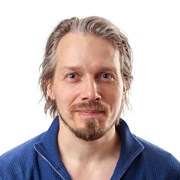A more evident example of FSI is literally right in front of us. Whereas some people can take a deep breaths and sleep tight, others may find them self in a completely different situation. Their nose- and respiratory tract causes them to, when they draw their breath, to snore. When we're awake the muscles keep the respiratory tract open. When we're asleep, however, the muscles relax and the soft tissue in the upper part of the tract begins to behave like a flag in the wind. Snoring occurs when the soft parts of the respiratory tract is deformed so much that the airway momentarily is completely closed.
There are a variety of treatments for sleep apnea, depending on the severity level, but the medical staff only have their past experience and judgment to base their decisions on when choosing a type of treatment. Today there are no available tools to help predict the outcome of treatment. Worst case: the surgical treatment could worsen the situation rather than help.
Researchers in flow engineering at SINTEF Materials and Chemistry, desire to help improve treatment for those struggling with sleep-related breathing disorders. As of today, no one knows exactly how the respiratory system is affected by the airflow. There is no method that measures the elasticity of the mucous membranes and soft tissues of living patients. In collaboration with researchers at NTNU and St. Olav's Hospital, we want to establish mathematical models to illustrate what happens in the airways where sleep apnea occurs.
To obtain reliable mathematical models work interdisciplinary work is required, combining theoretical knowledge with experiments, measurements and medical examinations. The finished mathematical models can be used to predict the effectiveness of treatment methods, and the aim is to create an indispensable tool for medical personnel when determining the best treatment option for each patient.


